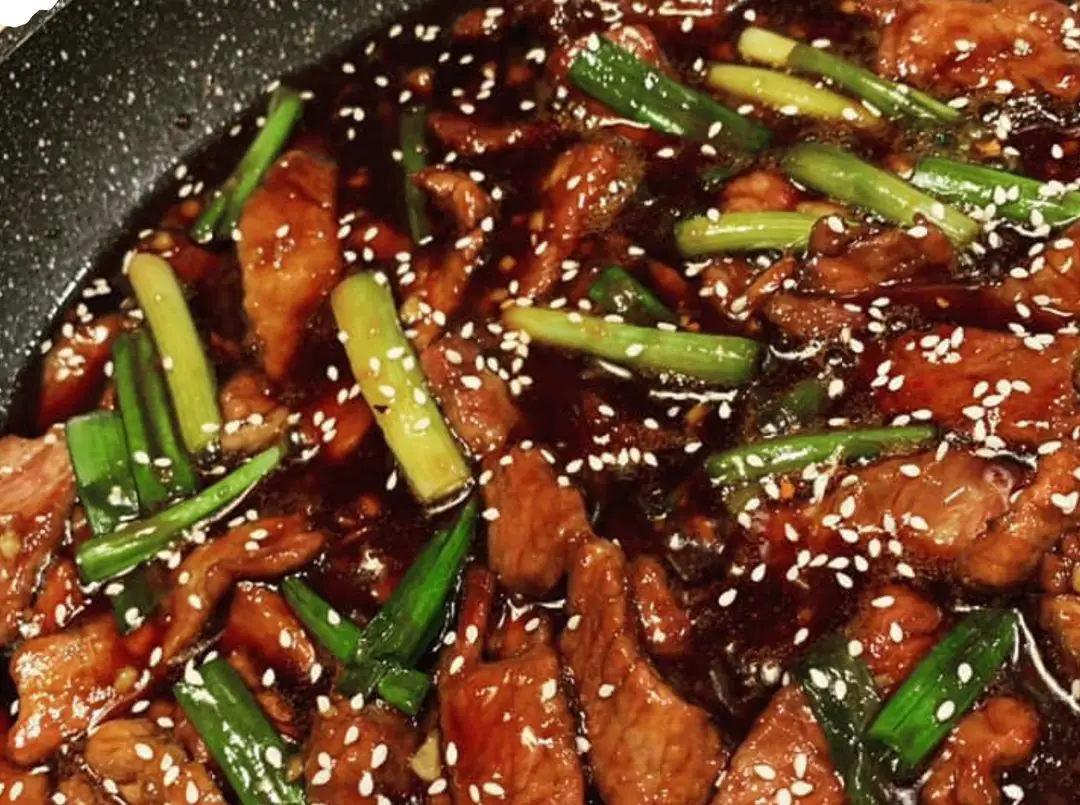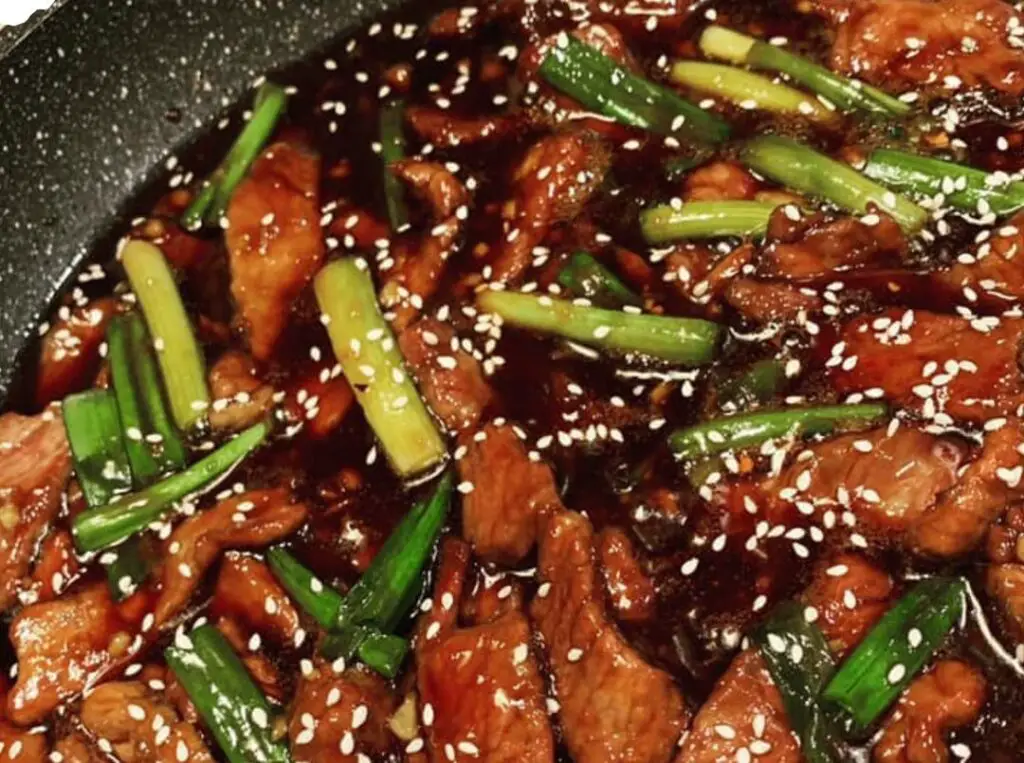Mongolian Beef is a classic Asian dish known for its tender strips of flank steak coated in a flavorful sauce. This recipe combines savory hoisin sauce, soy sauce, and aromatic spices to create a dish that’s both satisfying and easy to make at home.
Ingredients:
- 1/4 cup plus 2 tablespoons hoisin sauce
- 2 tablespoons soy sauce
- 1 tablespoon brown sugar
- 1 1/2 tablespoons water
- 1 1/2 pounds flank steak, thinly sliced against the grain
- Salt
- Black pepper
- 1/4 cup cornstarch
- Vegetable oil (avocado or peanut), about 6 tablespoons
- 2 teaspoons grated ginger
- 5 dried red chilis
- 2 teaspoons garlic, pressed through garlic press
- 4 green onions, sliced into 1-inch long pieces
- Rice, for serving (optional)
Directions:
- Begin by whisking together hoisin sauce, soy sauce, brown sugar, and water to prepare the sauce. Set it aside.
- Toss the thinly sliced flank steak with salt, black pepper, and cornstarch. Allow it to rest while you heat your cooking pan.
- Heat a wok or heavy-bottom pan over high heat. Add about 4 tablespoons of oil. Once hot, sear the steak slices in batches until they develop a brown crust. Remove and set aside.
- Reduce the heat to medium-low. Add about 2 tablespoons more oil to the pan. Stir-fry the dried red chilis for about 30 seconds, then add ginger and garlic, stirring until aromatic.
- Return the seared beef to the pan. Add sliced green onions and the prepared sauce. Toss everything together until well-coated and heated through.
- Serve the Mongolian Beef family-style over rice or noodles, or spoon onto a platter with rice on the side.
Tips:
- Slice the flank steak thinly against the grain to ensure tenderness.
- Work in batches when searing the steak to avoid overcrowding the pan, which can lead to steaming instead of searing.
- Adjust the amount of dried red chilis according to your spice preference.
- Serve with steamed rice or noodles to soak up the delicious sauce.
Conclusion:
Mongolian Beef offers a delightful combination of savory flavors and tender meat, making it a popular choice for home-cooked Asian cuisine. With simple ingredients and straightforward cooking techniques, this recipe allows you to recreate the taste of your favorite restaurant dish in the comfort of your own kitchen. Enjoy the rich flavors and aromatic spices of this classic dish!
- Can I use a different cut of beef for Mongolian Beef?
Absolutely! While flank steak is traditionally used for Mongolian Beef due to its tenderness and ability to absorb flavors well, you can substitute it with other cuts such as sirloin or even ribeye. Just ensure that the beef is thinly sliced against the grain to maintain tenderness. - How can I adjust the spiciness of the dish to suit my taste preferences?
The level of spiciness in Mongolian Beef can be adjusted by controlling the amount of dried red chilis used. If you prefer a milder dish, you can reduce the number of chilis or remove the seeds before adding them to the pan. Conversely, if you enjoy a spicier kick, you can increase the quantity of chilis or even add a dash of chili flakes or chili oil to intensify the heat. - What can I serve with Mongolian Beef besides rice?
While serving Mongolian Beef over a bed of white rice is traditional and delicious, there are other options you can explore. Try serving it with steamed brown rice, quinoa, or even noodles such as rice noodles or lo mein noodles. Additionally, you can pair it with stir-fried vegetables like broccoli, bell peppers, or snap peas to add freshness and texture to the meal. - How do I ensure that the beef turns out tender and not tough?
To ensure tender beef in your Mongolian Beef dish, there are a few key steps to follow. First, be sure to slice the flank steak thinly against the grain. This helps break down the muscle fibers and ensures tenderness. Secondly, make sure not to overcook the beef during the initial searing process. Cook the steak just until it develops a brown crust on both sides, as overcooking can result in toughness. Finally, allow the beef to simmer in the sauce just until heated through, being careful not to overcook it, as this can also lead to toughness.


